Mani: Apostle Of Light And His Ancient Rock Crystal Seal
Ellen Lloyd - AncientPages.com - A major gnostic religion originating in the Sassanid era of Babylonia was founded by the Persian prophet Mani (216-277 CE).

Rock Crystal Sasanian Seal: Mani and two of the Elect priests. The inscription reads, "Mani, the Apostle of Jesus Christ". The seal once used by the prophet Mani to authenticate his writings and correspondence. It is housed in the National Library of France.
Mani, who in the past was considered by scholars to be a Christian heresy, intentionally created a universal church that incorporated Christian, Zoroastrian, and Buddhist concepts.
Today, his religion - Manichaeism - is accepted as an independent religion. His new religion would not simply replace the previous religions but instead represent the fulfillment of what the previous religions had promised but not been able to live up to.
Most of Mani's original writings have been lost, but numerous translations and fragmentary texts have survived and can provide invaluable historical insights.
Image source: National Library of France.
An ancient rock crystal seal once used by the prophet Mani to authenticate his writings and correspondence is now housed in the National Library of France. The artifact has been studied by Zsuzsanna Gulacsi, professor of Comparative Cultural Studies, to provide new interpretations and prepare the seal for further research.
She published her findings in the Bulletin of the Asia Institute.
Prophet Mani was the founder of a religion now called Manichaeism. He preached a universal philosophy that included elements of Zoroastrianism, Buddhism, Christianity, and Hinduism.
The seal is flat on one side and rounded on the other, with a recessed carving on one half, creating a positive image on the opposite side. Mani is flanked by two people, possibly disciples, and an inscription reading 'Mani, the apostle of Jesus Christ' forms the perimeter.
According to Gulacsi, Mani stood out among the religious leaders of the time because he wrote his doctrine, compared to Jesus, Mohammad, and the historical Buddha, who were not known to read or write.
He believed other religious leaders had their teachings distorted because they could not write themselves.
"Their disciples did not have the capacity of a prophet, whose clarity of religious insight was believed to surpass that of ordinary human beings," said Gulacsi, who believes that Mani wore his crystal seal as a pendant, a practice of that time.
"...his seven canonical works included the Treasure of Life, Living Gospel, Book of Giants, Book of Mysteries, Letters, Psalms and Prayers [all in Syriac Aramaic], and the Shabuhragân [in Persian]). Jesus, he said, came to the West, and after his death, his disciples wrote down his words.
Zoroaster came to Persia but did not write books, though his disciples remembered and wrote down his words after his death. And, when the Buddha came, he preached much wisdom and established churches, but he did not write anything, and, again, it was his disciples who wrote down his words after his death..." according to Judith Weingarten's blog.
The rock crystal is flat on one side and rounded on the other, with a recessed carving on one half, creating a positive image on the opposite side.
The Mani's seal is a unique surviving artifact about the size of a quarter; the thin quartz seal was likely once encased in gold to facilitate its use.
In 274, Mani died in prison after being persecuted for his religious teachings. His belongings were likely passed to his successor, but the crystal seal's fate is only known once it turned up in Paris in 1896, where it was purchased and housed in the gemstone section of the National Library of France.
Despite its historical significance, Mani's engraved crystal seal had escaped attention until recently.
Written by - Ellen Lloyd – AncientPages.com
Updated on December 17, 2023
Copyright © AncientPages.com All rights reserved. This material may not be published, broadcast, rewritten or redistributed in whole or part without the express written permission of AncientPages.com
More From Ancient Pages
-
 Rare Bulla (Seal) And 2,600-Year-Old Stamp With Biblical Name Unearthed In City Of David
Archaeology | Apr 3, 2019
Rare Bulla (Seal) And 2,600-Year-Old Stamp With Biblical Name Unearthed In City Of David
Archaeology | Apr 3, 2019 -
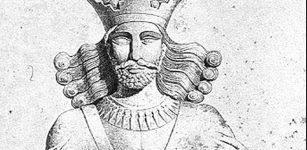 Darabgerd: One Of The Oldest Cities Dated To Achaemenid Era
Featured Stories | Jan 28, 2021
Darabgerd: One Of The Oldest Cities Dated To Achaemenid Era
Featured Stories | Jan 28, 2021 -
 Magnificent Trumpington Cross And Highly Unusual Anglo-Saxon ‘Bed Burial’ In Cambridge Offer Unique Insight Into English Christianity
Archaeology | Feb 22, 2018
Magnificent Trumpington Cross And Highly Unusual Anglo-Saxon ‘Bed Burial’ In Cambridge Offer Unique Insight Into English Christianity
Archaeology | Feb 22, 2018 -
 Vettuvan Koil Temple Spectacular Monolith Dedicated To Lord Shiva And Built By Pandya Dynasty
Featured Stories | May 25, 2021
Vettuvan Koil Temple Spectacular Monolith Dedicated To Lord Shiva And Built By Pandya Dynasty
Featured Stories | May 25, 2021 -
 Mysterious Ancient Site Of Çatalhöyük: Remains Of Early Structures May Shed More Light On Its Obscure Past
Archaeology | Apr 11, 2017
Mysterious Ancient Site Of Çatalhöyük: Remains Of Early Structures May Shed More Light On Its Obscure Past
Archaeology | Apr 11, 2017 -
 Catherine De Medici – Queen Of France Supported Nostradamus, Was Suspected Of Poisoning And Blamed For Horrible Massacre
Featured Stories | Dec 17, 2018
Catherine De Medici – Queen Of France Supported Nostradamus, Was Suspected Of Poisoning And Blamed For Horrible Massacre
Featured Stories | Dec 17, 2018 -
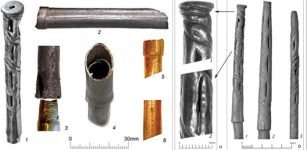 Oldest Surviving Drinking Straws Identified – ‘Sceptres’ From The Maikop Kurgan
Archaeology | Jan 19, 2022
Oldest Surviving Drinking Straws Identified – ‘Sceptres’ From The Maikop Kurgan
Archaeology | Jan 19, 2022 -
 Summer Solstice Festivals Around The World – Midsummer Celebration Is An Ancient Tradition Still Alive
Ancient Traditions And Customs | Jun 21, 2024
Summer Solstice Festivals Around The World – Midsummer Celebration Is An Ancient Tradition Still Alive
Ancient Traditions And Customs | Jun 21, 2024 -
 On This Day In History: A Solar Eclipse Occurs, As Predicted By Thales Of Miletus – On May 28, 585 BC
News | May 28, 2016
On This Day In History: A Solar Eclipse Occurs, As Predicted By Thales Of Miletus – On May 28, 585 BC
News | May 28, 2016 -
 On This Day In History: Irish Saint Columbanus Founder Of Monasteries In Europe Died – On Nov 21, 615
News | Nov 21, 2016
On This Day In History: Irish Saint Columbanus Founder Of Monasteries In Europe Died – On Nov 21, 615
News | Nov 21, 2016 -
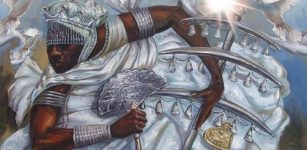 Obatala ‘King Of The White Cloth’ And Creation Story Of Yoruba People
African Mythology | Jan 9, 2021
Obatala ‘King Of The White Cloth’ And Creation Story Of Yoruba People
African Mythology | Jan 9, 2021 -
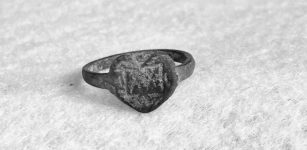 Unique Heart-Shaped Jesuit Ring At Fort St. Joseph In Michigan
Archaeology | Sep 17, 2022
Unique Heart-Shaped Jesuit Ring At Fort St. Joseph In Michigan
Archaeology | Sep 17, 2022 -
 Unique Find In A French Crypt Offers The First Evidence Of European Familial Embalming Dating Back To The 16th Century
Archaeology | Nov 20, 2024
Unique Find In A French Crypt Offers The First Evidence Of European Familial Embalming Dating Back To The 16th Century
Archaeology | Nov 20, 2024 -
 Ancient Egyptians Invented Toothpaste
Ancient Technology | Dec 26, 2015
Ancient Egyptians Invented Toothpaste
Ancient Technology | Dec 26, 2015 -
 First Genomic Evidence Of Early Migration From New Guinea Into The Wallacea Archipelago – New Study
Archaeology | Jan 14, 2025
First Genomic Evidence Of Early Migration From New Guinea Into The Wallacea Archipelago – New Study
Archaeology | Jan 14, 2025 -
 Has The Burial Place Of Mysterious Dark Age King Cerdic Of Wessex Been Located?
Archaeology | Apr 23, 2024
Has The Burial Place Of Mysterious Dark Age King Cerdic Of Wessex Been Located?
Archaeology | Apr 23, 2024 -
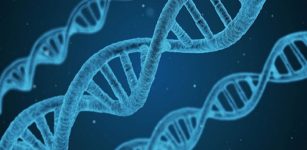 New Models Shed Light On Life’s Origin
DNA | Feb 13, 2023
New Models Shed Light On Life’s Origin
DNA | Feb 13, 2023 -
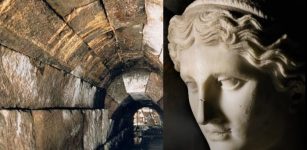 Venus Cloacina: Roman Goddess Of Sewers And Drains
Featured Stories | Dec 19, 2019
Venus Cloacina: Roman Goddess Of Sewers And Drains
Featured Stories | Dec 19, 2019 -
 Humans Lived In Rainforests At Least 150,000 Years Ago In Africa
Human Beginnings | Feb 27, 2025
Humans Lived In Rainforests At Least 150,000 Years Ago In Africa
Human Beginnings | Feb 27, 2025 -
 Remarkable Discovery Of Unusual “Hammer Of Thor” Finally Solves An Ancient Mystery
Archaeology | Jul 2, 2014
Remarkable Discovery Of Unusual “Hammer Of Thor” Finally Solves An Ancient Mystery
Archaeology | Jul 2, 2014

